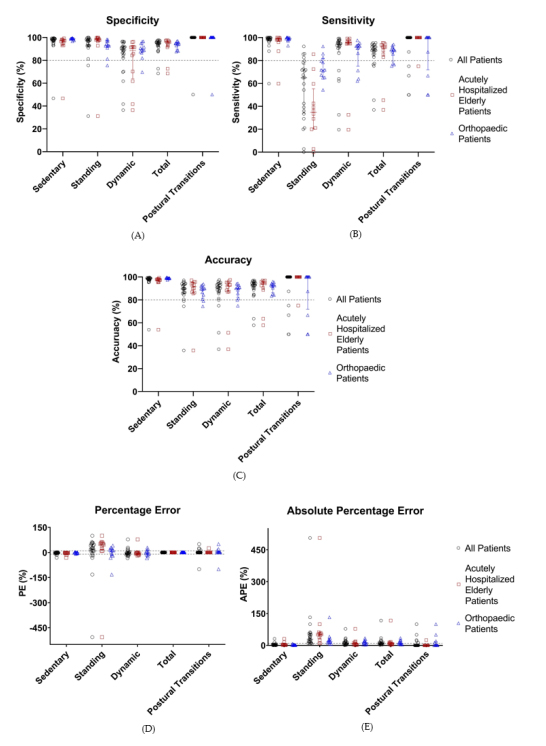Introduction
Using a physical activity monitoring algorithm that is validated in healthy adults in a population of hospitalized patients requires optimization and validation of the algorithm’s performance
An appropriate algorithm for hospitalized patients that can distinguish standing and dynamic activities as well as characterize postural changes is currently lacking. Using an algorithm that is validated in healthy adults in a population of hospitalized patients would require optimization and validation of the algorithm’s performance.
Goal of the study
The study uses the Hospital Fit smartphone application and wireless accelerometers to differentiate between standing and dynamic activities and classifies postural transitions. The Hospital Fit connects with an accelerometer which enables PA monitoring and stimulates recovery in hospitalized patients. The algorithm embedded in the MOX accelerometer can separate sedentary behavior (lying/sitting) from active movement (standing/dynamic) in hospitalized patients. Furthermore, the algorithm is able to differentiate time spent being sedentary (lying/sitting) from time spent being active (standing/dynamic) in hospitalized patients.
Another study conducted by Bijnens et al. presets a configurable PA classification algorithm that is validated to differentiate sedentary behavior and dynamic activities in healthy elderly people. The adjustable parameters enable optimization of the performance of the algorithm for different target groups or sensor locations. The algorithm had not yet been optimized or validated in hospitalized patients. Validating the new algorithm and implementing the proposed algorithm in Hospital Fit eHealth app to improve accuracy and reliability of physical activity monitoring in hospitalized patients is intended.
Results
The aim of this study was to optimize and validate the physical activity classification. The results showed that all activities were classified within acceptable limits (>80% sensitivity, specificity and accuracy under 10% error), except for the classification of standing activity. As patients need to increase their PA and interrupt sedentary behavior, the algorithm is deemed suitable for classifying PA in hospitalized patients. The algorithm improvements have been embedded in the Hosptial Fit.
Specificity, sensitivity, accuracy, percentage error and absolute percentage error were measured.

How can we help you with your research?
Maastricht Instruments creates equipment in the field for accelerometry. We provide support for Clinical research, E-health applications, accelerometry algorithms and data processing and analyses. Consult us about our accelerometry products, MOX1, MOX2, MOX3, MOX5 and BACE. or eHealth applications: Hospital Fit and Miss Activity
Article reference
Optimization and Validation of a Classification Algorithm for Assessment of Physical Activity in Hospitalized Patients (van Dijk-Huisman et al., 2021)
Keywords: Accelerometry, PA, physical activity, hospitalized patients, algorithms
